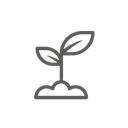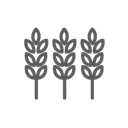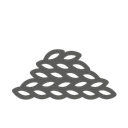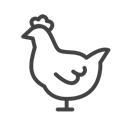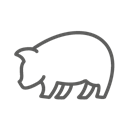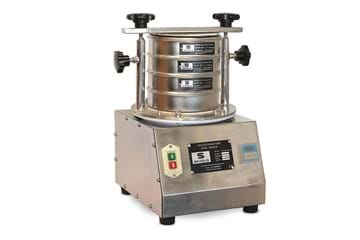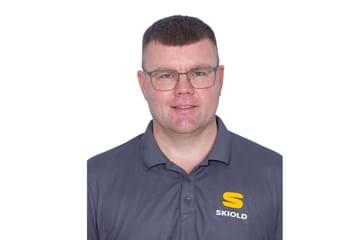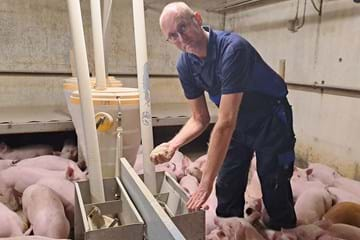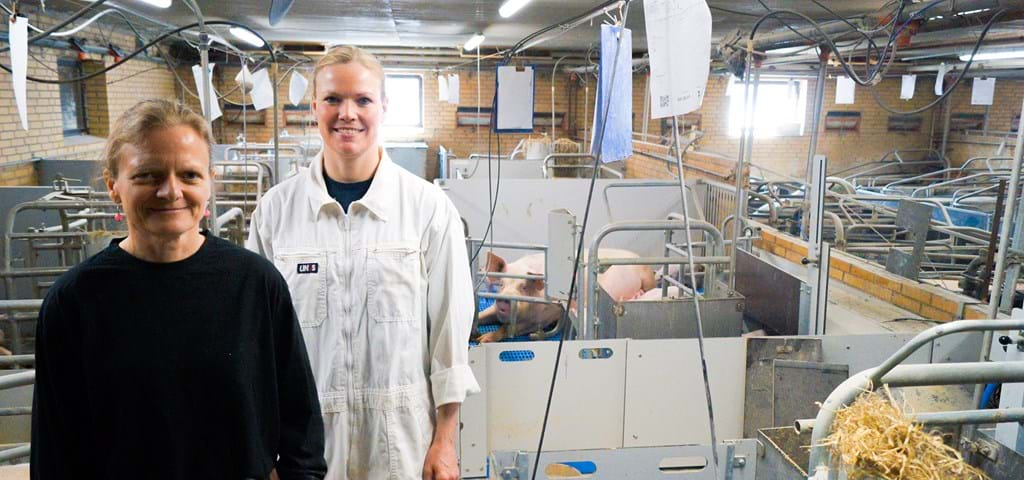
Development of pen design on the drawing board
SKIOLD is part of the development of new designs for free farrowing sows. Aquiring new knowledge on the behaviour of the animals, that can ensure a high level of management and bring new dimensions to the daily work.
The increasing litter sizes seen in Denmark entails an important process in the development of pens for free farrowing sows. That is the project where the pen has room for 20+ piglets. Apart from that best practice knowledge on management of sows with large litters is being collected and distributed, as success in management is key to a good and quick start with free farrowing sows.
At SKIOLD we have, based on years of great expertise in the development of pen design and modern solutions for free farrowing sows, been given a key role in contributing to this continuous improvement and development of framework, conditions and management in the pen.
This will welcome the future needs and requirement of more robust pigs at weaning, in order to produce weaners without adding zinc and with a continuous low use of antibiotics. This will then reduce the number of early weaned pigs.
”Because the sow can take care of an entire litter of piglets, we don’t need to use nurse sows. That means that all of our pigs will be 4 weeks at weaning and then they can make it without zinc and just speed right through the weaner units.” Says Viv Moustsen from SEGES.
The test pens are in use and the aim is that 90% of the pigs can take care of up to 18 piglets in multiple lactations by use of supplemental milk. This is done by re-thinking the design of the pen and creep and with this also distances and position of supplemental nutrition such as milk cups. An the test pen is obviously different.
”It is differnet becuase we have created more space and we put in supplemental milk. Up to 14-15 piglets then the sow can take of her own pigs. In this pen we have said that we have 20 piglets in the pen and then we need some supplemental milk for them to nurse at the same time, and if anybody is hungry, then they are at risk of getting crushed by the sow.”
“The important thing is that we don’t have any hungry piglets at any time and this is why we put supplemetnal milk in these pens. It is also important that the piglets start to use the milk ealy on, because we know that a lot of the supplemental milk we see on the market today, it takes some time before the piglets are capable of activating and using it.” Vivi Moustsen explains.
"Today we wean almost 20% of the pigs at 3 weeks of age to see if the sows can be used as nurse sows. An increased number of live born pigs will, all else being equal, lead to increased use of nurse sows and with the current nurse sow practices, a larger proportion of pigs will be weaned at 3 weeks. In the test pens the aim is to wean all pigs at 4 weeks.
All pigs wil lhave the same age at weaning here and thus same immune status so when they are being moved to the weaner unit they will have the same immune status and they weigh more and are older as well as more capable of absorbing feed when they are moved.
This pen is different because the sow takes care of an entire litter of piglets. This is one of the things that is one of our challenge in terms of production and society, because the sow gives birth to more piglets than she has teats to so the piglets can not nurse at the same time and therefore they are being moved. The natural part of that is some of the things that the public eye is looking at and there is work associated with this as well, as it is a challenge to establish the nurse sows and so on. This is what is new in this pen and there is definitely potential because it works really well.” Vivi Moustsen finishes.
What should the future farrowing pen look like? There is no right answer to this question but there are recommendations and conditions that must be considered. Following conditions should be considered: Farm size, pen size and dimensions, litter size (born pigs and after equalization) – that fulfills the requirements today and in the life of the farm. Apart from that you should look at floor surface, access to piglets, supervision of sow and piglets, choice of enrichment, hygiene, operational safety, ventilation, manure system, option to confine, risk of injuries on sow and piglets as well as the longevity of the pens.


 English
English
 Danish
Danish
 French
French
 Swedish
Swedish
 Vietnamese
Vietnamese
 Spanish
Spanish
 German
German
 English
English
